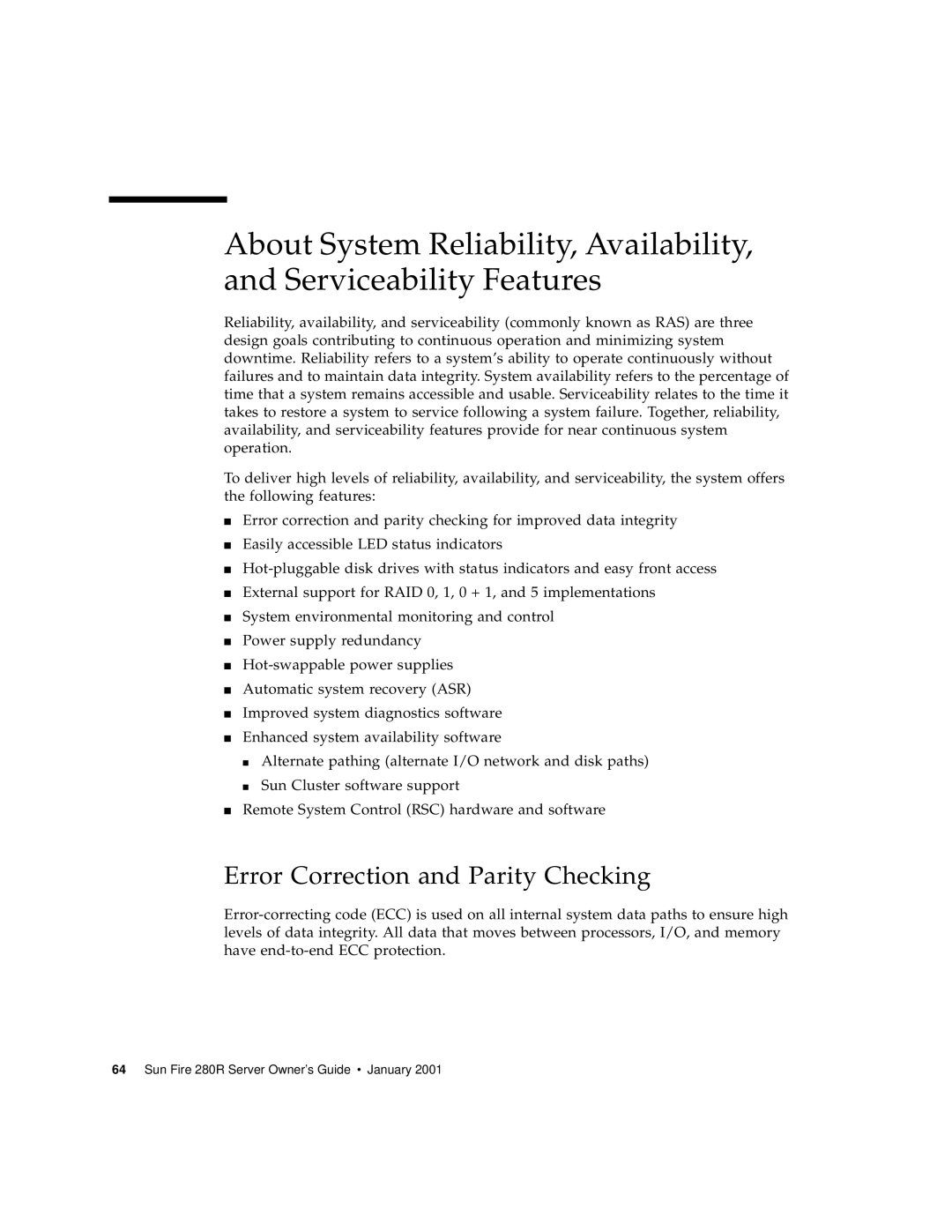About System Reliability, Availability, and Serviceability Features
Reliability, availability, and serviceability (commonly known as RAS) are three design goals contributing to continuous operation and minimizing system downtime. Reliability refers to a system’s ability to operate continuously without failures and to maintain data integrity. System availability refers to the percentage of time that a system remains accessible and usable. Serviceability relates to the time it takes to restore a system to service following a system failure. Together, reliability, availability, and serviceability features provide for near continuous system operation.
To deliver high levels of reliability, availability, and serviceability, the system offers the following features:
■Error correction and parity checking for improved data integrity
■Easily accessible LED status indicators
■
■External support for RAID 0, 1, 0 + 1, and 5 implementations
■System environmental monitoring and control
■Power supply redundancy
■
■Automatic system recovery (ASR)
■Improved system diagnostics software
■Enhanced system availability software
■Alternate pathing (alternate I/O network and disk paths)
■Sun Cluster software support
■Remote System Control (RSC) hardware and software
